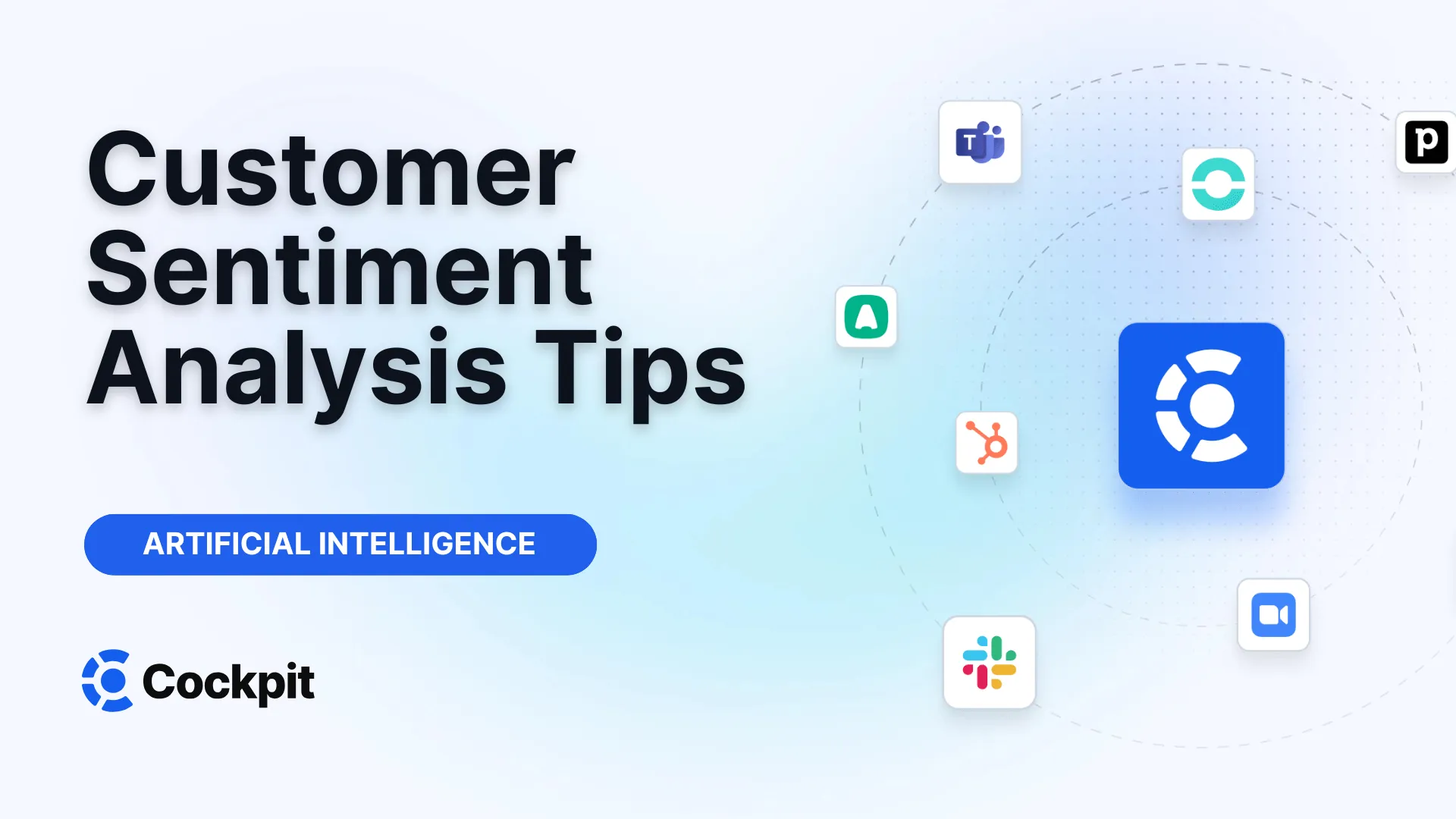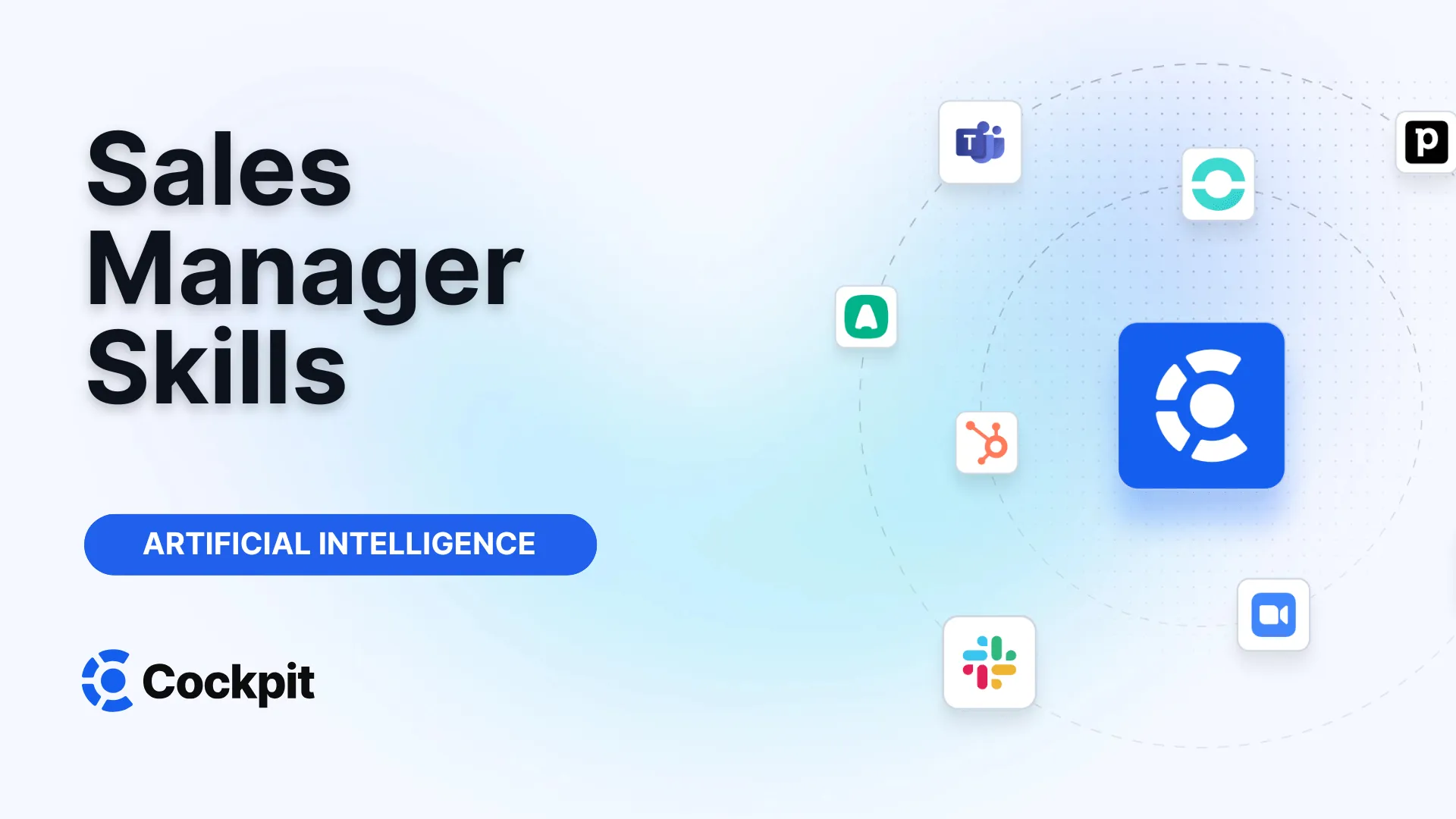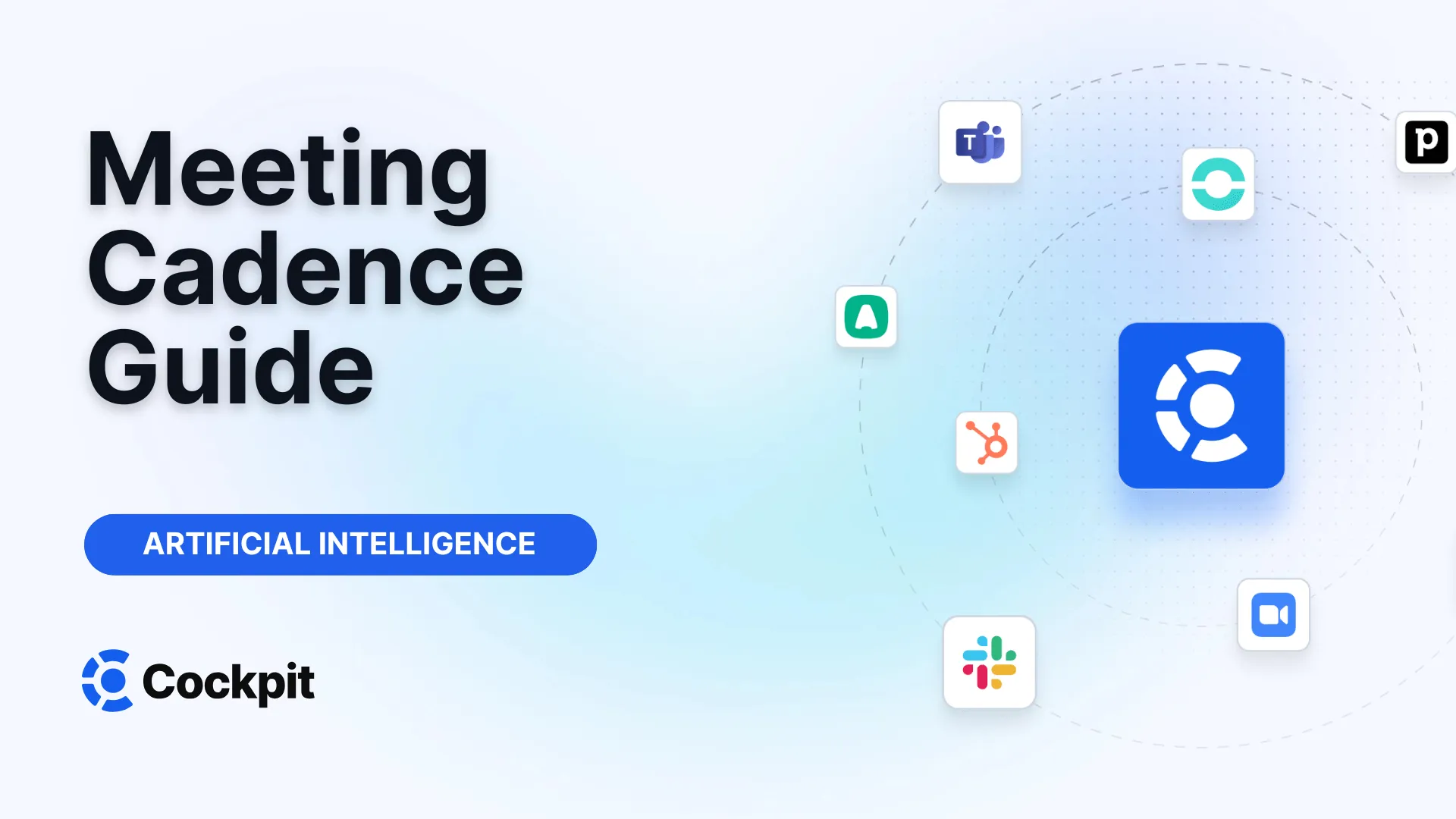Optimize your sales force in just a few clicks

Thousands of sales teams boost their performance with Cockpit. Why shouldn't you?
Explore CockpitSummary
Do you really know what your customers think and feel? Beyond CSAT scores and NPS ratings, how can you transform their raw feedback—whether written or spoken—into a concrete strategy? How can you turn thousands of conversations, reviews, and support tickets into clear insights that can guide your product, marketing, and sales teams? The answer lies in a powerful approach that decodes the hidden emotions within the data: customer sentiment analysis.
This technology does more than just sort feedback; it reveals frustrations, expectations, and moments of satisfaction that define the customer experience. Get ready to discover how to leverage this goldmine to not only retain your customers but also to innovate and gain a competitive edge.
What is Customer Sentiment Analysis?
Customer sentiment analysis is the automated process of identifying, extracting, and quantifying emotions, opinions, and attitudes expressed in customers’ textual and vocal data. In other words, it is about understanding how customers feel about your brand, products, or services. This technique relies on artificial intelligence (AI) and natural language processing (NLP) to turn subjective, unstructured feedback into actionable information.
Companies have colossal volumes of customer data from multiple channels:
- Customer service conversations (emails, chats, phone calls)
- Online reviews and social media
- Responses to satisfaction surveys (NPS, CSAT)
- Discussions on forums or communities
Sentiment analysis enables rapid and accurate processing of these massive volumes where manual analysis would be impossible. It does not merely classify feedback as "positive," "negative," or "neutral," but can go much further by identifying specific emotions such as frustration, confusion, or satisfaction, thus providing a nuanced and in-depth view of the voice of the customer.
Why is Sentiment Analysis Crucial for Your Business?
In a market where more than 60% of consumers report having higher expectations for customer service, ignoring your customers' feelings is no longer an option. Sentiment analysis offers tangible benefits that directly impact business performance, from retention to product innovation.
Improve Customer Experience and Personalization
Understanding a customer’s emotional state in real time allows you to personalize interactions spectacularly. A support agent equipped with this information can adapt their communication, show empathy, and resolve issues more effectively. Imagine the difference between a standard response and an approach informed by sentiment analysis:
Standard approach:
"Hello, thank you for contacting support. How can I help you?"
Sentiment-informed approach:
"Hello Jean. I see you are having an issue with our latest update that is blocking your team. I understand your frustration and have already alerted an engineer to prioritize this."
According to Gartner, personalized messaging focused on customer assistance can generate 16% more business impact. This personalization strengthens the feeling of being heard and valued, turning a potentially negative experience into a positive interaction.
Anticipate and Reduce Churn Rate
Dissatisfied customers do not always openly express their intention to leave. However, subtle signals of frustration or disappointment are often present in their interactions. Sentiment analysis acts as an early warning system by identifying “at-risk” customers before it’s too late. By detecting phrases like “I’ll look elsewhere” or measuring increased frustration across multiple tickets, you can intervene proactively.
For example, Fivetran successfully reduced its churn rate by 25% by integrating a customer sentiment score to prioritize support team actions.
Predict and Prevent Support Escalations
An escalation to a manager is often the result of frustration that was not detected in time. Real-time sentiment analysis can identify early signs of escalation, such as an impatient tone, repeated unresolved issues, or mentions of “wasting time.”
By analyzing conversations, AI can automatically flag a ticket as "urgent" or "at risk of escalation," enabling managers to assign it to the most experienced agent. Qlik thus saw a 30% reduction in support escalations within just six months after implementing such a solution.
Conversational intelligence tools, like Cockpit, excel in this domain by analyzing sales or support calls directly. They enable managers to spot tense calls and coach their teams to better handle such situations in the future, turning a risk into a retention opportunity.
Optimize Your Products and Services
Your customers are your best source of information for innovation. Sentiment analysis synthesizes thousands of feedback entries to identify root causes of problems or the most requested features. If many customers express frustration about a recurring bug in the payment process, the product team can prioritize its fix. Similarly, if positive sentiment emerges around a specific feature, the marketing team can highlight it in campaigns.
The Nutanix cloud platform uses these insights to fuel its product and engineering teams, ensuring development remains continuously aligned with actual user expectations.
Enhance Training and Retention of Your Agents
Sentiment analysis benefits not only customers but also provides valuable data for coaching teams. If satisfaction scores are low for an agent or group, analysis can reveal specific gaps in relational skills ("soft skills") or product knowledge. Training thus becomes targeted and more efficient.
Moreover, by identifying signs of frustration or burnout among agents, managers can act to prevent burnout and improve retention. Fewer than 30% of agents feel fully qualified for their tasks, highlighting a crucial need for better support driven by concrete data.
Expert Advice
Do not rely solely on traditional indicators like average resolution time (ART). A case can be resolved quickly yet leave a customer frustrated. Sentiment analysis adds a quality layer to your quantitative metrics. By correlating low CSAT scores with sentiments such as "confusion" or "impatience" detected in conversations, you gain an accurate diagnosis to improve your teams' performance.
Different Methods of Customer Sentiment Analysis
Sentiment analysis is not a monolithic approach. There are several levels of depth to decode customer emotions, each offering different insights.
Fine-grained Analysis
This is the most common form, which classifies sentiment on a polarity scale. Instead of limiting to "positive/negative/neutral," it uses a more nuanced rating, for example from -5 (very negative) to +5 (very positive). This allows measuring emotional intensity and prioritizing problems more effectively. A score of -4 signals a greater urgency than a score of -1.
Emotion Detection
This method goes beyond polarity by identifying specific human emotions:
- Joy
- Anger
- Sadness
- Fear
- Frustration
- Confusion
- Trust
Knowing that a customer is "frustrated" rather than simply "negative" allows for a much more empathetic and targeted response.
Aspect-Based Sentiment Analysis
This is one of the most powerful forms of analysis. Instead of assigning an overall sentiment to a comment, it breaks down the text into "aspects" (or themes) and analyzes the sentiment for each. This granularity is essential for obtaining actionable insights.
Consider this customer review: "The delivery service was incredibly fast, but the product arrived damaged and customer service was unresponsive."
A global analysis might classify this as "negative." Aspect-based analysis gives a much richer picture:
| Aspect | Sentiment |
|---|---|
| Delivery | Very Positive |
| Product Quality | Negative |
| Customer Service | Negative |
This method enables precise identification of what works well and what needs improvement.
How to Conduct Sentiment Analysis?
There are two main approaches to analyzing sentiments: the manual method, useful for understanding the basics, and the automated approach, essential for operating at scale.
The Manual Approach: Understanding the Mechanics
Performing manual analysis on a small sample of data is an excellent exercise to understand the underlying logic. Here are the key steps:
- Choose feedback channels: Focus on the richest sources, such as support conversations, online reviews, or open-ended NPS survey responses.
- Collect data: Gather all your raw feedback in one place, like a spreadsheet (Google Sheets or Excel).
- Define a taxonomy of tags: This is the most critical step. Create relevant tags for your business. These can include themes ("Price," "Interface," "Support"), products, or more advanced concepts.
- Tag and score each feedback: Read each comment, assign appropriate tags and a sentiment score (e.g., on a scale of 1 to 5).
- Analyze and present results: Once data is classified, use charts to visualize trends. For example, track sentiment evolution for the theme "Ease of Use" over time.
Although instructive, this approach is extremely time-consuming and subject to human bias. It becomes unmanageable once data volume exceeds a few dozen comments per month.
Note: The Art of Taxonomy
The quality of your analysis depends entirely on the relevance of your taxonomy. Do not limit yourself to obvious themes. Create tags that meet your business objectives. A highly effective tag used by some companies is "ChurnRisk", applied as soon as a customer expresses frustration likely to cause them to leave. This allows instant prioritization of these critical interactions.
The Automated Approach: The Power of AI
For medium and large businesses, automation is the only viable path. AI-based sentiment analysis tools perform the same work as manual analysis but instantly, precisely, and at unlimited scale.
These platforms connect to your various data sources (CRM, help desks, social networks) and use machine learning models to:
- Understand context, irony, and jargon specific to your sector.
- Automatically identify themes and aspects without having to create taxonomy manually.
- Assign sentiment scores and detect emotions with high accuracy.
- Present insights in interactive, easy-to-understand dashboards.
Automation frees your teams from manual analysis and provides reliable, real-time insights to make better decisions.
Tools and Technologies for Sentiment Analysis
The market offers a variety of tools, each with its strengths. The choice depends on your primary data sources and objectives.
Dedicated Feedback Analysis Platforms
These tools are designed to aggregate and analyze feedback from multiple channels: surveys, online reviews, emails, etc. They offer centralized dashboards to monitor sentiment trends across different topics, customer segments, or periods. They are ideal for CX and marketing teams seeking a broad view of the voice of the customer.
Customer Support Software with Integrated AI
Many customer service platforms (such as Zendesk or Intercom) include basic sentiment analysis features. They can automatically tag tickets based on polarity (positive/negative). This is a good starting point, but these functionalities are often less granular than specialized tools, particularly in aspect-based analysis.
Conversational Intelligence Platforms
This category of tools, which includes Cockpit, specializes in analyzing voice and video conversations. This is where the richest insights are often hidden. These platforms operate in several steps:
- Recording and transcription: Each call (sales, support, recruitment) is automatically recorded and transcribed into text.
- AI analysis: The AI analyzes the transcript not only to detect sentiment but also key themes (objections, competitor mentions, next steps), adoption of sales methodologies, and more.
- CRM synchronization: Insights, summaries, and sentiments are automatically pushed into your CRM.
For sales, customer success, or recruitment teams, these tools turn every conversation into a structured data source. They enable managers to coach their teams based on real moments and ensure that vital information is never lost.
Sentiment analysis is no longer a luxury reserved for tech giants. It is a strategic lever accessible to all, allowing you to place the voice of the customer at the heart of your decisions. By turning raw data into emotional insights, you do not just improve satisfaction; you build stronger relationships, more relevant products, and a more resilient business. The question is no longer if you should listen to your customers, but how deeply you do it.
FAQ on Customer Sentiment Analysis
How can sentiment analysis predict customer behavior?
By analyzing sentiment trends over time, companies can identify predictive patterns. For example, a continuous decline in positive sentiment coupled with mentions of "bugs" can forecast a wave of churn in the coming months. Similarly, a spike in positive sentiment following a feature launch may indicate potential for upselling. This information allows you to anticipate behaviors (churn, purchase, recommendation) and adapt marketing and sales strategies accordingly.
Is sentiment analysis really accurate?
Modern AI tools have very high accuracy, but it depends on context and model quality. The best tools go beyond generic models by offering customization. For example, the word "sick" is negative in most contexts but positive in youth slang ("that's sick!"). Platforms like Cockpit enable creating a customized vocabulary so the AI perfectly understands your jargon and your customers’, ensuring optimal accuracy. Moreover, continuously trained models by data scientists offer far greater reliability than static systems.
How can I integrate sentiment analysis into my existing tools like my CRM?
Integration is a key success factor. Modern platforms are designed to connect seamlessly to your technology ecosystem via APIs. For example, a conversational intelligence tool can automatically synchronize a call summary, discussed themes, and overall customer sentiment directly into the opportunity record in your CRM (such as Salesforce or HubSpot). This enriches your CRM with valuable qualitative data, ensuring your whole team has a 360° customer view without manual data entry.
What is the difference between sentiment analysis and indicators like NPS or CSAT?
NPS (Net Promoter Score) and CSAT (Customer Satisfaction Score) are quantitative indicators. They tell you what (for example, "7 out of 10 customers are satisfied") but not why. Sentiment analysis is a qualitative approach that answers the "why." It analyzes open-ended comments associated with these scores to understand reasons for satisfaction or dissatisfaction. The two are complementary: NPS/CSAT alerts you to a trend, and sentiment analysis provides the root causes so you can act accordingly.




